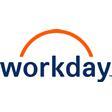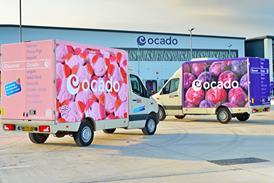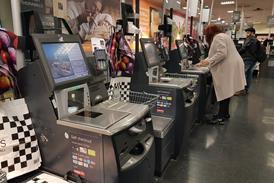PROMOTIONAL RESEARCH
When it comes to developing an effective diversity and inclusion (D&I) programme, it’s not enough to be diverse. Being inclusive is what’s really important. Find out more in Be Inspired’s new report.
Diversity advocate Vernā Myers famously said: “Diversity is being invited to the party. Inclusion is being asked to dance.”
What this means for retailers is that, while it’s imperative to have different people with different characteristics across your business, it’s equally as crucial for them to have a say in shaping D&I strategies.
“Lead with inclusion” is the advice of Catherine Gillespie, HR director for Coca-Cola European Partners – which has won widespread recognition for its D&I initiatives.
In fact, Gillespie says Coca-Cola thinks about it as “inclusion and diversity, so I&D instead of D&I, as this really sharpens our focus in that, before anything else, we need to create an inclusive culture”.
Learn more about how to build an inclusive workplace and root D&I strategies into the core of your business in Retail Week’s new report Diversity DNA.
Three core ways to embed inclusion throughout your business:
1. Start from your talent pipeline
Make your job postings more inclusive by thinking carefully about the terminology you use. LinkedIn research found words such as “aggressive” used in job vacancies are more likely to be off-putting to women, for instance.
Share examples and stories of people from all strands of diversity working in your business who are succeeding, because studies show people are more likely to apply for jobs when they see themselves represented in the recruitment material.
Make sure to also accommodate diverse talent with varying needs and preferences. Can a role that requires commuting regularly be flexed to accommodate the needs of a person who is disabled, for instance?
2. Build awareness of the employee experience
Look at ways to promote those from diverse groups to senior leadership positions.
Bridget Lea, BT’s consumer division managing director of commercial, says: “Coming up through the ranks, I never saw a senior retail leader who looked like me.
“It’s critical that organisations have honest conversations about social mobility and diversity in the workplace, and how they can balance the playing field at all levels in the business, including the boardroom.”
“It’s critical that organisations have honest conversations about social mobility and diversity in the workplace”
Bridget Lea, BT
But tread carefully when it comes to ‘diversity’ hires. Nathaniel Wade, co-founder of Wakuda, the marketplace exclusively for Black-owned brands, says retailers must take “meaningful action to create real change within”.
“There have been ‘diversity’ hires to tick boxes but substantial change to give equitable opportunities is still often missing. Brands need to think of imaginative ways to support, collaborate with and empower the Black community. Internal culture must match external posture.”
3. Create and nurture employee networks
There needs to be advocacy and advancement of underrepresented groups. To drive awareness and truly understand the employee experience, retailers should regularly hold listening sessions and internal steering groups to minimise group-thinking (when individuals from the same background tend to accept a viewpoint that represents a perceived group) while managers are encouraged to provide personalised support to their direct reports.
Global research and advisory firm Gartner reported in April 2020 that the most successful organisations in D&I go beyond traditional leadership development programmes that focus solely on skill-building to advance women, LGBTQ+, or racially and ethnically diverse employees.
Instead “they also target managers of programme participants to spread awareness of the employee experience of their direct reports, build trust and enable greater manager advocacy”.
To drive awareness and truly understand the employee experience, retailers should regularly hold listening sessions and internal steering groups to minimise group-thinking
Create networking programmes for underrepresented talent. When companies do this, HR leaders are two times more likely to report improved organisational inclusion and 1.3 times more likely to report increases in diverse employee engagement, Gartner research from April 2020 found.
Pets at Home has found success in breaking down internal barriers by creating networks. It has launched networks on gender, race, disability, and most recently LGBTQ+, to widen knowledge and understanding of all colleagues.
You can find out more about how Pets at Home, M&S, The Very Group, Superdrug and many more retailers are leading the way when it comes to fostering an inclusive culture in Retail Week’s new report Diversity DNA.
What does the report cover?
-
The stats behind the headlines – just how diverse is UK retail and how can it do better?
-
Ways to speak out on behalf of marginalised voices and lean into difficult conversations as an ally.
-
How to minimise the impact of Covid-19 on staff and advancing equitable workplaces.
-
Exclusive insights from retailers and organisations breaking down barriers and accelerating real change.
-
Discover the five building blocks to D&I strategy success.
Inclusion starts with you
Promoting inclusivity is central to Retail Week’s Be Inspired programme. We know we each need to take action. That’s why we ran our free Be Inspired virtual conference Inclusion Starts with You in June.
The event gathered retailers, experts and influencers together to explore how to take the first steps to invoking real change, covering themes including allyship, unconscious bias, mental health, empathy, upskilling and reskilling, and identifying your strengths. You can watch all the sessions from the conference on demand here.












![Ollie Pryor[46]](https://d53bpfpeyyyn7.cloudfront.net/Pictures/274x183/1/7/1/3119171_olliepryor46_336332_crop.jpg)






















No comments yet